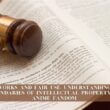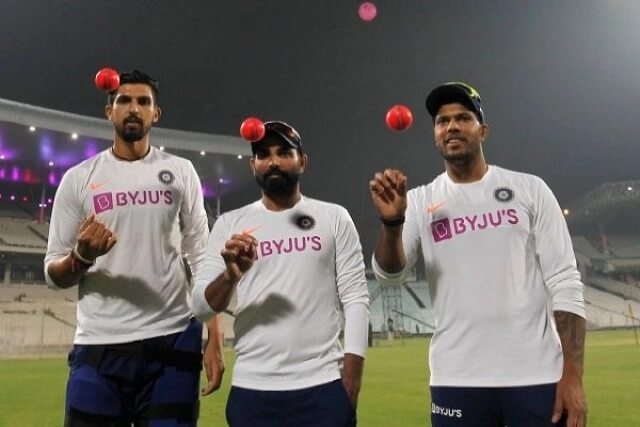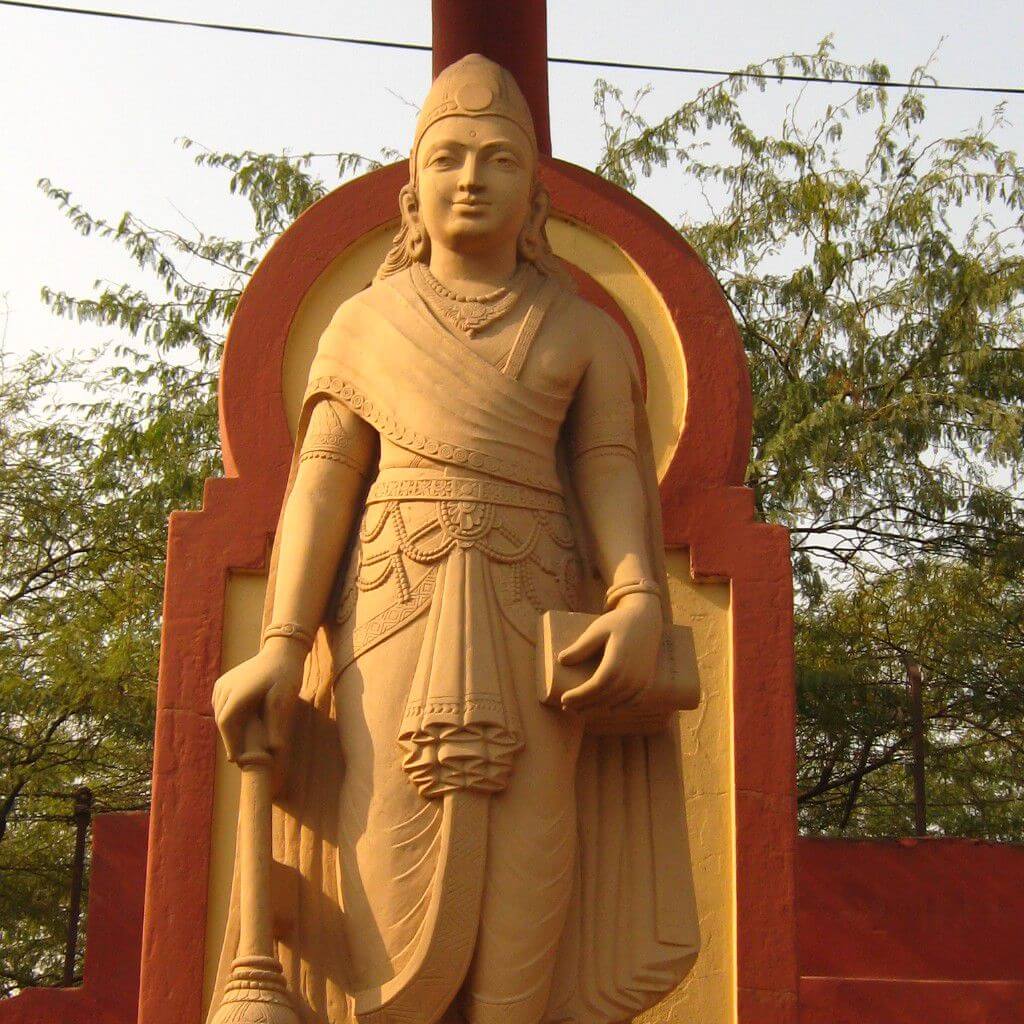The last independent emperor of Bengal, Bihar, and Orissa was Siraj ud Daulah. His reign holds immense importance in Indian History. With the end of his era, the rule of the British East India company started. In this article, you will get to know everything about this last Nawab of independent India. Nawab Siraj ud Daulah, his biography, bravery, and the battle of Plassey everything we covered in this post.

Early life of Siraj ud-Daulah
Siraj ud Daulah was born in 1733, as the grandson of Alivardi Khan who was the Nawab of Bengal then. Alivardi khan had no son but three daughters. All three daughters married his elder brother Haji Ahmad’s sons. The eldest daughter Ghaseti Begum married Nawazish Muhammad. The elder daughter married Syed Ahmed, and the younger daughter Amina Begum married Zain ud-din Ahmed khan. Amina Begum had two sons Mirza Muhammad and Siraj ud Daulah and one daughter Mirza Mehedi.
Alivardi Khan got appointed as the governor of Bihar in Patna, when Siraj ud Daulah was about to born. However, people considered Siraj as the lucky son of the family. He had all the attention, love, and special care from his grandfather, Alivardi Khan. Hence, he adopted Siraj as his son and brought him up under his guidance.
Siraj ud-daulah grew up in the palace of his grandfather with proper care and education. Moreover, e accompanied his grandfather in military ventures against the enemies. In 1746, Alivardi khan went on a war with the Marathas. He appointed Siraj on the throne of Patna, under the guidance of Janki ram to take care of his empire. But Siraj did not like working under another person, as he wanted full authority of the throne. Disappointed Siraj went to Patna with some of his companions and wife Lutfunnisa begum. He revolted against Alivardi khan and took over the castle in Patna. Alivardi Khan took the situation under control when he rushed to the castle and stopped Siraj. Therefore to calm Siraj down, then and there khan declared Siraj ud-daulah as the Nawab of his emperor after him.
Siraj ud Daulah’s Reign as Nawab
He was only seventeen at that time. And he achieved something that many of his relatives were jealous of, in fact. His aunt Ghaseti Begum, Mir Jafar, Jagat Seth, Mehtab Chand, and Shaukat Jung were not liking this promotion of Siraj ud Daulah. Among them, Ghaseti Begum was very wealthy and possessed many mahals, gardens, and palaces. A very influential woman amongst the nawab family, who wanted to dethrone Siraj ud-daulah.
Alivardi Khan died on April 10, 1756, leaving young Siraj to rule his empire. After that, Ghaseti begum conspired against him. She supported the east India company’s activities of making several official buildings in Kolkata. In the end, Siraj understood the conspiracy against him and seized her Motijheel palace and all her wealth. After that, he also put her under his confinement.
As a result, Siraj understood his relatives and close ones were responsible for the arising troubles in his empire. After seizing Motijheel, he went for the Cossimbazar palace and seized it. On 27th May his army took over the Cossimbazar palace. In that year only he attacked Kolkata, and after a long fight Siraj took over Kolkata too. As a result, he let his chief commander Manik Chand take the ruling command of Kolkata. Then he left for Murshidabad – the capital.
Black Hole of Calcutta
During the Fort William attack in 1756, there was an incident that led to the Battle of Plassey. The British established Fort Williams so that the East India Company could trade easily in the city of Calcutta. But why Calcutta? Because Calcutta had docks nearby and the principal city of the Bengal Presidency. Siraj Ud Daula ordered the French and British to stop fortification immediately. The French compiled the orders from nawab but the British did not. As a consequence of the British indifference, the infuriated Siraj Ud Daulah seized Fort Williams with his army.
As a result, Siraj ud Daulah attacked Fort Williams with 30,000 soldiers, 20,000 horsemen, 400 trained elephants, and 80 cannons. The British shoulders were not prepared for such an attack, so most of them fled along with their Indian troops. Unfortunately one of the troops they left Behind as a token. That specific troop’s commander was John Zephaniah Holwell. Nawab’s Soldier captivated the British troop and put them in a small guard room of the building. The room was a tiny one. It was 18 feet long and 14 feet 10 inches wide with two small windows.
A total of 64 soldiers were there in the room but only 11 survived. However, Holwell described in his book that the troops of Siraj ud Daulah were acting in confusion. They were without proper command. Anyhow, the British soldiers tried to bribe the Indian Shoulders. They asked to move them to a bigger room and give them some water. But unfortunately, Nawab Siraj ud Daula was sleeping at the time, and nobody dared to wake him up. As a result, they left 64 soldiers in a small room with two tiny Windows and no water.
On June 20, 1756, 43 soldiers died out of heat exhaustion and suffocation. The soldiers died either because of heatstroke, suffocation, or trampling.
In the morning Nawab woke up and commanded to open the Guard’s room. They discovered the commotion that happened last night. According to Holwell, Nawab showed no regret for his actions. And commanded to throw away the bodies of the dead soldiers in a dumping ground. The British marked this incident as the Black Hole of Calcutta in the history of the Battle of Plassey.
This incident holds immense significance in Indian history. After this, the British authority was Furious and they thought of taking revenge. Moreover, they claimed that there were 146 Prisoners and 123 out of them died of suffocation that night. The British East India company tried their best to put false allegations on Siraj Ud daulah. They also propagated a false story of killing hundreds of soldiers. After that, there was the parliamentary inquiry of Robert Clive’s actions in India. Sir William Meredith withdrew all the charges from Siraj Ud daulah regarding the black hole incident. This incident later became the chief reason behind the conspiracy against the Nawab. The reason for which he lost his Kingdom and his life.
Upon returning to Murshidabad
Upon returning to Murshidabad Siraj felt betrayed. Disappointed Siraj took strong actions against his councilors. As a result, He replaced many top commanders of his court with the ones he trusted. He put Manik Chandra behind the bars. Nawab Siraj ud Daulah replaced Mir Jafar and appointed Mir Madan as Bakshi (paymaster of the army). He elevated the position of Mohanlal to the rank of Peshkar of his Dewan Khana.
Returning to Murshidabad Siraj ud Daulah sent a letter for war to Saukhat Jung – nawab of Purina. Saukhat Jung organized his army and started marching towards Murshidabad. On hearing such news the east India company tried to ally with Saukhat Jung. The governor of Madras, Robert clive took an army to Kolkata, to take Calcutta back from Siraj ud-Daulah. At Nawabgaunj, Siraj and Saukhat came face to face. They fought till Saukhat lost and died in the war field. Siraj ud-daulah took over Purina, after that.
On the other side, Clive and Watson attacked Kolkata. Siraj ud Daulah was in Murshidabad. And in his absence, it was easy for the British to take over Kolkata again. Earlier on arriving in Kolkata, clive sent a treaty letter to which Siraj ud Daulah agreed. In spite of the treaty, the east India Company attacked Kolkata. Nawab understood that his councilors are against him. They are involved with the British government in a conspiracy against him. Understanding the heat of the situation Siraj agreed upon all the deals mentioned in the treaty, on February 7th, 1957. We know this treaty between Siraj ud Daulah and the British as ‘Treaty of Ali Nagar’.
Conspiracy Against The Nawab
Seeing all the activities of Nawab Mir Jafar understood the seriousness of the situation. Therefore, he called for a meeting at Jagat Seth’s house. The merchants and businessmen in Siraj Ud Daulah’s reign worried about their wealth, contrary to the time of Alivardi Khan. They included Yar Latif in their alliance to defend themselves from any upcoming troubles or threats. They conspired against Nawab Siraj ud Daulah and decided to dethrone him to make Mir Jafar the new Nawab.
William Watts, the company representative in nawab’s durbar understood the increasing rage amongst the councilors against the Nawab. He informed Robert Clive about the conspiracy going on. It was not that Siraj didn’t know what was going on. After the British attacked Chandanagar Siraj felt the need to strengthen his army and gather all his Troops. He talked to the French chief Jean Law and made an alliance with them. He feared the attacks from the Marathas and the Afghans. As a result, he could not gather all his army against the British. Siraj sent some of his soldiers to Plassey under the command of Rai Durlabh.
Yar Latif talked to Watson, to get the company’s support against Siraj. The chief conspiracists were Mir Jafar, Yar Latif, Jagat Seth, Omi Chand, and Krishna Chandra. Robert Clive made a committee on May 1st, and the committee passed the resolution to support the alliance. Mir Jafar signed a treaty with the British that said East India company will help Mir Jafar. They will help to dethrone Siraj Ud daulah. Not only that but also they will elevate him to the Throne of Bengal. In return, they wanted a large sum of compensation as support in the Battle of bestowal.
Mir Jafar and other people from the alliance didn’t want Omi Chand in their confederacy. They wanted it to be a secret, but Omi Chand got to know about this and felt betrayed. He increased his demand to 3 million rupees and 5% of the total treasure. Otherwise, he threatened to tell Siraj about the conspiracy they plotted against him. On Clive’s suggestion, they made two treaties, one on the white paper and one on the red paper. The white one was the actual treaty. All the members from the committee signed both the treaties but Admiral Watson only signed the real one. The real one did not mention any demands that Omi Chand had. But the red one mentioned the demands of Omi Chand. As a result, Clive divided his troop into two parts, one he sent to Chandannagar another to Plassey.
The Battle of Plassey
Nawab Siraj ud Daulah knew everything about the conspiracy going on against him. He got to know that the British troops are coming to attack him. The Troops started their attack from Chandannagar, and on their way, they took over Hooghly, Agradeep, and Katwa. Even though nawab had troops in these places, none of them stood against the British army.
Finally, on 23rd June, the Nawab’s army and the British army came face to face in Plassey. Nawab’s faithful commander-general Mir Madan Khan fought bravely against the British. By the afternoon there was heavy rain. The British troops covered their weaponry, and gunpowder but the nawab’s army did not do so. With drenched gunpowder and guns, the firing rate slackened. As a result, Mir Madan assumed that British guns will also be affected by rain. Hence, he went forward with his troop, but with heavy grapeshot, Mir Madan Khan died.
Upon hearing the news of the death of Mir Madan Khan Siraj called Mir Jafar and attempted reconciliation. After that, Mir Jafar gave Nawab his words of service. But immediately sent words to Clive to push his army for battle. Rai Durlabh and Mir Jafar convinced Siraj to leave for Murshidabad with 2000 horseman. In his absence, they will defend the British troops with their army.
Nawab withdrew 2000 soldiers, and while they were returning, British commander Major Kilpatrick attacked them from behind. He recognized the opportunity, and cannonade the retiring army. The troops of Siraj was taken aback with surprise, most of them fled. None of the other commanders came to rescue or merely support Siraj. Anyhow, the Nawab succeeded to come back to Murshidabad, and he left for Bhagwangola by a secret tunnel. He was hoping to gather the army with the help of French governor Jean law and escape to Patna. After that, he would rescue Bengal again. He escaped on a boat with his wife Lutfunnesa and daughter.
After Mir Jafar came back to Murshidabad and could not find Siraj ud Daulah. He sent his troops in every direction to Captivate him. Upon reaching Rajmahal Nawab took shelter there and went out to the market in search of food. Even though he was in disguise, one of the military personnel who was Mir Jafar’s brother recognized him. He sent a message to Mir Jafar. Then Mir Jafar captivated Siraj ud Daulah along with his wife and daughter from Rajmahal.
Death of Siraj
That night Mir Jafar’s son Mir Miran gave orders to Mohammed Ali Beg to kill Nawab Siraj ud Daulah. He killed him at Namak Haram Deorhi. After killing him they made his dead body roam around the city on the back of an elephant. His tom now locates at Khusbagh, Murshidabad, beside the tomb of his grandfather Alivardi khan.
The aftermath
After the battle of Plassey ended the British raj started in the Indian subcontinent. According to the treaty between Mir Jafar and the East India company had the lion share. The British now had all the land that Marathas had. Not only that but also 660 yards beyond it. They took donations of 22,000,000 rupees for their losses. Also the zamindari of all the land beyond Calcutta up to the Bay of Bengal.
What Happened to Mir Jafar and Other Traitors?
You might not believe it, but all conspiracists died a painful death. Mir Jafar lived a few more years and died of leprosy. His son Mir Miran who ordered the death of Siraj died of a lightning strike. Mir Qasim the next nawab after Mir Jafar put Jagat Seth in a sack and threw him into the river. After the battle of Plassey, Omi Chand got to know that he will not get anything. Not even a single penny from Siraj ud Daulah’s wealth. Also, not even 5% of the treasure that they promised him. All of it will go to Mir Jafar, he went insane. He also died a painful death. Mir Miran had ordered to drown Ghaseti begum in the Dhaleshwari river. Most importantly Robert clive committed suicide in London in 1774.












